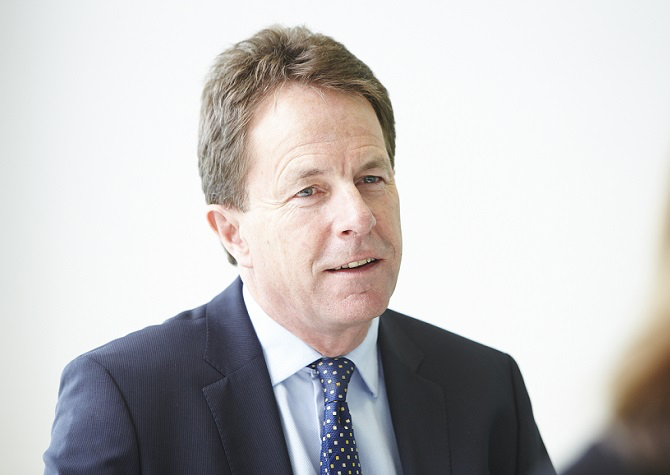The recent short-term COVID-19 related pay cuts by some FTSE 100 firms have failed to address the UK’s excessive executive bonus culture, confirmed recent research from the CIPD and the High Pay Centre. Although 36 FTSE 100 companies have announced executive pay cuts in response to the COVID-19 crisis and economic downturn, “this doesn’t signal a sea change for reining in excessive incentives”, noted the research.
While most of the 36 firms used a combination of measures to cut pay, the report suggests these are mainly “superficial or short-term”, confirmed the report FTSE 100 CEO Pay in 2019 & during the pandemic. The most common measure taken by around 14 companies has been to cut salaries at the top by 20%. However, salaries typically only make up a small part of a FTSE 100 CEO’s total pay package, according to the research. Around 11 companies have cancelled Short-Term Incentive Plans (STIP) f or their CEOs while two other firms have deferred salary increases for their CEOs. None of the 36 companies have chosen to reduce their CEO’s Long-Term Incentive Plan (LTIP), which typically makes up half of a CEO’s total pay package, noted the study.
For the financial year ending 2019, the report found that FTSE 100 CEOs took home a median pay package worth £3.61m, which is 119 times greater than the median earnings of a UK full-time worker (£30,353). This is broadly the same as the median FTSE 100 CEO salary for the financial year ending 2018 (£3.63m) and only represents a 0.5% decrease. Performance-related pay policies also continued to be paid out. Around 88 FTSE 100 companies paid their CEO an annual bonus in 2019, with total payments reaching £108.48m. ‘Long Term Incentive Plans’ (LTIPs) paid out at 81 companies totalled around £238.19m.

Image credit: Mohamed Hassan, Pixabay
NEED FOR REFORM
The report argues that when performance-related pay is almost guaranteed (as appears to be the case when the overwhelming majority of policies pay out every year) its value as a reward or incentive is greatly weakened. Huge incentive payments also risk giving individual executives disproportionate credit for performance dependent on a much wider range of factors, such as the economic context or the contribution of the company’s wider workforce.
The CIPD and High Pay Centre believe that the findings underscore the need for “reform to the remuneration committees that set executive pay”. Building on the amended UK Corporate Governance Code 2018, they want decisions on top pay and bonuses to be more fairly aligned with wider workforce pay and to incentivise other areas critical to longer term sustainability. This includes investment in training and improvements in company culture and diversity, as well as customer experience and the environment.
“It doesn’t look like the pandemic has proven to be an inflection point for executive pay yet,” pointed out Peter Cheese, Chief Executive of the CIPD, the professional body for HR and people development. “The bulk of cuts made so far appear to be short-term and don’t signify meaningful, long-term change. Pay among the FTSE 100 will probably fall next year, but this is more likely to be due to wider economic circumstances rather than a fundamental change in approach to executive pay.”

FAIRER SYSTEMS
There’s still a “disconnect between the total reward packages of CEOs in the FTSE 100 and their actual contribution to long-term company performance”, according to Cheese. “Too big a share of CEO payments depends on the fluctuating fortunes of the stock market and not enough on whether they are a responsible custodian of the business for all stakeholders, including, of course, the workers who drive long-term value. As well as other environmental and social factors, now more than ever, RemCos should be looking at wider workforce issues and organisational cultures to help them determine CEO pay. Not only would this help incentivise CEOs to improve how their organisation invests and manages its workforce to support long-term performance, but it should make companies fairer and will help rebuild trust in business.”
Adding to his comments, Luke Hildyard, Director of the High Pay Centre think tank, stated: “Very high CEO pay undermines the spirit of solidarity that many companies are trying to project as they battle against the impact of the coronavirus. More pragmatically, multi-million pound pay awards worth over a hundred times the salary of a typical worker seems like an unnecessary extravagance during a period of such economic uncertainty. If we want to protect as many jobs as possible and give the lower paid workers who have got the country through this crisis the pay rise they deserve, we will need to re-think the balance of pay between those at the top and everybody else.”

OTHER KEY FINDINGS
Further key findings from the FTSE 100 CEO pay in 2019 and during the pandemic report reveal that:
- The highest paid FTSE 100 CEO received a total pay package of £58.73m. This is 1,935 times the median salary of a full-time UK worker.
- Six firms paid their CEOs more than £10m in total.
- 70 companies disclosed the pay ratio between their CEO and the median pay of their UK employees. The highest quoted pay ratio was 2,605:1 and the lowest was 15:1. The median was 84:1 .
- The median pension contribution (or equivalent) given to a CEO is £189,000, representing 24% of their median salary. In comparison, pension contributions for employees represents 7.2% of their wages and salaries.
- For the first time in the report’s four-year history, there are now more women FTSE 100 CEOs (seven) than there are CEOs called David/Dave (six), Andrew/Andy/André (six) or John (five). However, mean pay for female CEOs (£4.02 m) is lower than mean pay of male CEOs (£4.74m)
- The under-representation of black CEOs in the FTSE 100 is even more stark than the gender imbalance. While the Corporate Governance Code does not require firms to report the ethnicity of their senior management teams, other sources suggest there are currently no black British CEOs in the FTSE 100.
RECOMMENDATIONS
In response to the research, CIPD and High Pay Centre recommend that:
- Pay should be set in a more democratic fashion with the company’s workforce given the opportunity to feed into the process, for example, via an employee representative on the RemCo.
- To help all stakeholders understand CEO reward packages more easily, RemCos should use fewer complex financial measures and incorporate more environmental, social and governance (ESG) goals instead.
- RemCos should ensure that the benefits CEOs and other senior executives enjoy are fair in relationship to what the rest of the workforce receive, such as health benefits and pension contributions.
- The Corporate Governance Code should be amended to require publicly limited companies to report on the ethnicity of their senior management teams and their direct reports.
Click here for a copy of the full report.







































